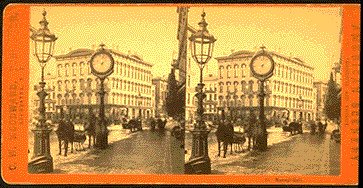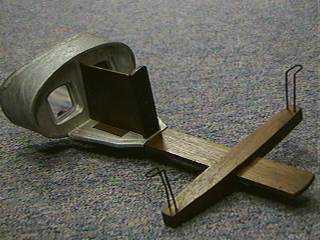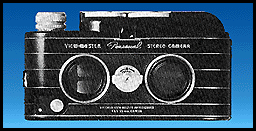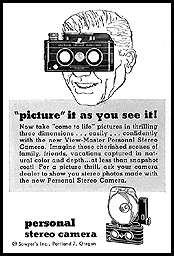

Stereoscopic viewers became especially popular after Oliver Wendell
Holmes' invention of the viewer pictured here. Just place the image
between the wire slots, and look through the eye-holes at a
three-dimensional rendering -- a kind of nineteenth-century virtual reality!
With the popularity of stereoscopic images, every bourgeois family could
bring the Taj Mahal or the Mayan pyramids into the sitting room.
Families could view one after another archaeological sites and distant
cousins. Was the stereoscope a product of -- or did it generate -- the
touristic
mentality?
Art historian Jonathan Crary argues that the stereoscope emblefied and contributed to the rupture of traditional notions about the relation between viewer and the object viewed. He writes,
The stereoscope as a means of representation was inherently obscene, in the most literal sense. It shattered the scenic relationship between viewer and object that was intrinsic to the fundamentally theatrical setup of the camera obscura. . . . The illusion of relief or depth [provided by the stereoscope] was thus a subjective event and the observer coupled with the apparatus was the agent of synthesis or fusion.In this sense, the stereoscope made evident that the image it displayed was humanly-made, constructed. It was impossible to see the stereoscopic image as merely mechanical objectivity in action. Rather, the stereoscopic image was produced by the viewer's eye.



Stereoscopes and
stereoscopic images retained popularity well
into the twentieth century. Ordinary folks began creating their own
stereoscopic views with specially-designed stereoscopic cameras.
Maintained by
jmnookin@bug.village.virginia.edu
URL: http://www2.iath.virginia.edu/ensp982/mnookin/scopes.html